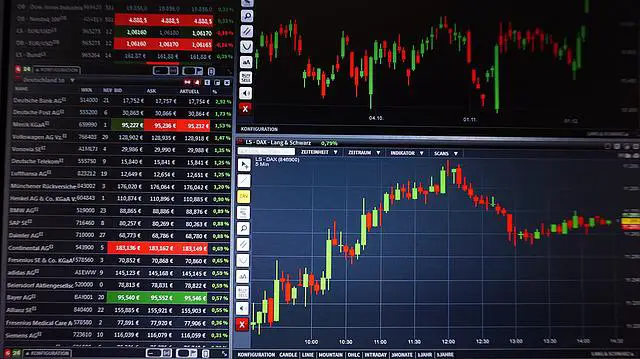Here are the most important stock trading terms to know if you are a new trader in the stock market.
Stock Market Basics
Equities: This means the stocks for companies. Owning a share in the business itself.
Going public: When a private company with a few owners issues shares of its equity on the stock market to raise capital for investing in and growing the business. This is a way for early investors in the company to monetize their holdings and have the liquidity to sell on the stock exchange.
Stock exchange: The market where stocks are bought and sold.
IPO: The initial public offering of shares of a company issued when a company goes public.
Shares: The amount of partial ownership certificates written by a company at the initial public offering.
Securities: This is a fungible financial instrument that represents financial value like a stock, bond, or option.
Stock Trading Terms to Know
Going long: To enter a stock position by buying the shares of a company.
Going short: To borrow shares you don’t own to sell in the market that you try to buy back later at a lower price to profit from the difference.
Exiting a position: Selling shares you hold to exit a long position or buying to cover shares if you are in a short position.
Bid: The price offered to buy shares at on an exchange.
Ask: The price offered to sale shares at on an exchange.
Bid/Ask Spread: The difference between the bid and ask prices quoted on an exchange due to liquidity.
Stock Market Phases
Bull Market: When equities as an asset class are under accumulation leading to higher highs and higher lows on stock charts.
Bear Market: When equities as an asset class are under distribution leading to lower highs and lower lows on stock charts. The beginning of a bear market is generally defined as beginning with a chart is down 20% from its highs.
Pullback : A -5% drop from recent highs in price.
Market correction: A -10% drop from recent highs in price.
Market crash: A -50% drop from recent highs in price.
Risk Management for Traders
Risk management: Metrics in trading that help keep losses of capital under control like stop losses and position sizing. It tries to remove the risk of ruin for a trader.
Risk of ruin: The possibility that a trader will lose such a large amount of their trading capital on a trade or series of trades that the account will not be able to ever recover from the loss and return to previous highs.
Position sizing: How much capital is in any one trade.
Stop loss: The technical price level where you exit because the trade is likely not going to work out in your favor.
Trailing stop: Moving your stop loss higher in a profitable trade to lock in profits if the price reverses too much against your position.
Profit target: The expectations of where price will go for your trade based on technical considerations.
Risk/Reward Ratio: Potential loss versus potential gain for a trade. (Entry – Stop)/(Target – Entry).
Total risk per trade: The percentage of total capital at risk of loss if the stop loss is triggered based on the position sizing. (Entry price – Stop loss price) x Shares / Total trading capital.
Profitable Trading
Backtesting: Quantifying the odds of success with signals by researching their performance over previous historical price action.
Trading edge: A process of entry and exit signals that create more profits than losses over time.
Trading plan: Predetermined steps for entering and exiting trades based on price action.
Trading strategy: A process that is created for profitability in the markets by quantifying the best signals for going long or short on charts.
Trading method: The overall principles and procedure used in trading the markets.
Trading system: A complete researched process to verify potential trades inside a framework for consistent execution of signals and position sizes on a watchlist with objectivity.
Trading psychology: The mental state of a trader when executing their strategy. The management of emotions and ego in making the right decisions with entries, exits, and position sizing.
